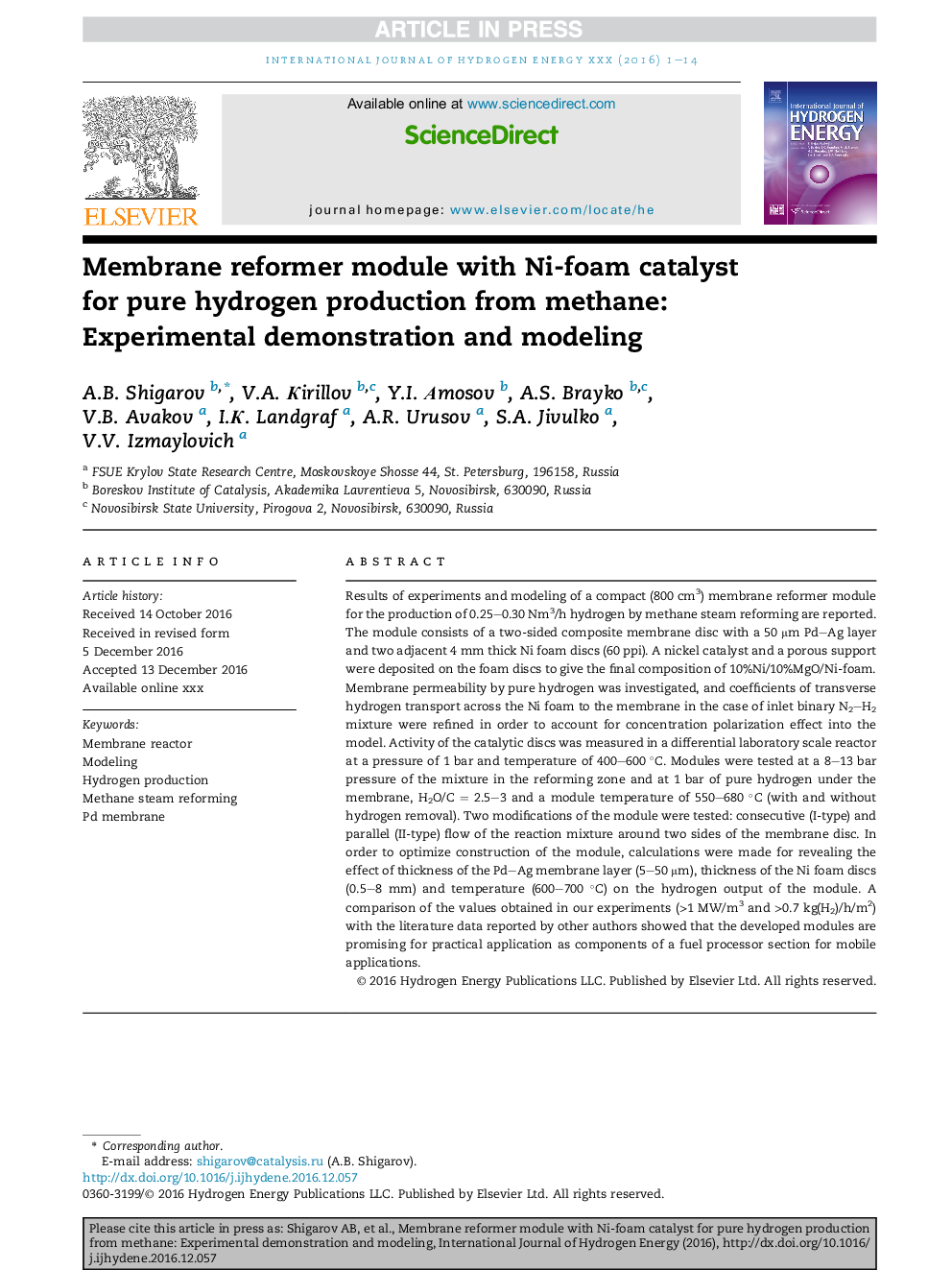| Article ID | Journal | Published Year | Pages | File Type |
|---|---|---|---|---|
| 5146112 | International Journal of Hydrogen Energy | 2017 | 14 Pages |
Abstract
Results of experiments and modeling of a compact (800 cm3) membrane reformer module for the production of 0.25-0.30 Nm3/h hydrogen by methane steam reforming are reported. The module consists of a two-sided composite membrane disc with a 50 μm PdAg layer and two adjacent 4 mm thick Ni foam discs (60 ppi). A nickel catalyst and a porous support were deposited on the foam discs to give the final composition of 10%Ni/10%MgO/Ni-foam. Membrane permeability by pure hydrogen was investigated, and coefficients of transverse hydrogen transport across the Ni foam to the membrane in the case of inlet binary N2H2 mixture were refined in order to account for concentration polarization effect into the model. Activity of the catalytic discs was measured in a differential laboratory scale reactor at a pressure of 1 bar and temperature of 400-600 °C. Modules were tested at a 8-13 bar pressure of the mixture in the reforming zone and at 1 bar of pure hydrogen under the membrane, H2O/C = 2.5-3 and a module temperature of 550-680 °C (with and without hydrogen removal). Two modifications of the module were tested: consecutive (I-type) and parallel (II-type) flow of the reaction mixture around two sides of the membrane disc. In order to optimize construction of the module, calculations were made for revealing the effect of thickness of the PdAg membrane layer (5-50 μm), thickness of the Ni foam discs (0.5-8 mm) and temperature (600-700 °C) on the hydrogen output of the module. A comparison of the values obtained in our experiments (>1 MW/m3 and >0.7 kg(H2)/h/m2) with the literature data reported by other authors showed that the developed modules are promising for practical application as components of a fuel processor section for mobile applications.
Related Topics
Physical Sciences and Engineering
Chemistry
Electrochemistry
Authors
A.B. Shigarov, V.A. Ðirillov, Y.I. Ðmosov, A.S. Brayko, V.B. Avakov, I.Ð. Landgraf, A.R. Urusov, S.A. Jivulko, V.V. Izmaylovich,
